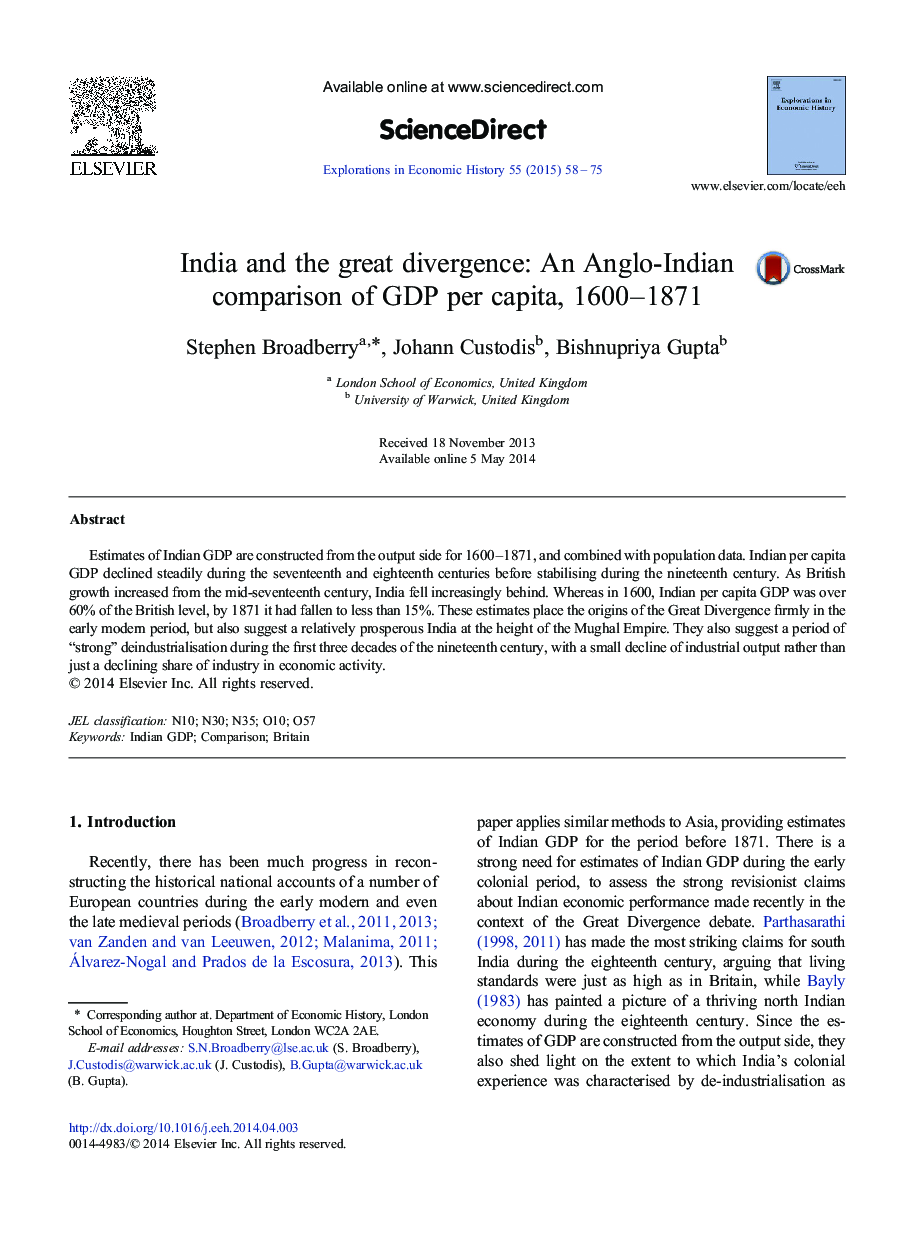| Article ID | Journal | Published Year | Pages | File Type |
|---|---|---|---|---|
| 5068783 | Explorations in Economic History | 2015 | 18 Pages |
Estimates of Indian GDP are constructed from the output side for 1600-1871, and combined with population data. Indian per capita GDP declined steadily during the seventeenth and eighteenth centuries before stabilising during the nineteenth century. As British growth increased from the mid-seventeenth century, India fell increasingly behind. Whereas in 1600, Indian per capita GDP was over 60% of the British level, by 1871 it had fallen to less than 15%. These estimates place the origins of the Great Divergence firmly in the early modern period, but also suggest a relatively prosperous India at the height of the Mughal Empire. They also suggest a period of “strong” deindustrialisation during the first three decades of the nineteenth century, with a small decline of industrial output rather than just a declining share of industry in economic activity.
